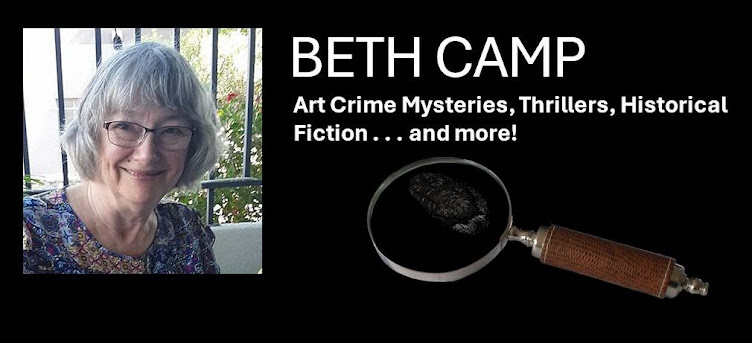So, why have I chosen a raven for my banner?
Ravens feed on dead things, their call at times a croak, their plumage the color of death. Because of my Swedish background, I was fascinated to read in Wikipedia that ravens were used in Viking war banners, one such banner named "land waster." Even at the Tower of London, ravens were a symbol of death, said to gather at beheadings, and protected by royal decree. Legend has it that the Kingdom of London will fall if the ravens are removed from the Tower of London.
In Standing Stones, as Mac McDonnell is being taken by boat to the Thames in London to await transportation to Van Diemen's Land, he counts the ravens gathering along the stepped gables and remembers an old saying: "One for sorrow, two for mirth; three for a wedding, four for death."
And here in the Pacific Northwest, a long tradition by native peoples says the Creator made two ravens -- one, the creator, bringer of light out of darkness, and the second, the trickster raven, the childish one, selfish, charming, not to be trusted. (Note: This is book 3 calling me once again as the story, River of Stones, will be set in the Pacific Northwest.) I will draw on this contradiction for my banner, the raven as the symbol of something unknown, larger than life, perhaps not to be trusted, implacable, but yet even close to death, full of life.
I took my new banner photo of a raven at Stirling Castle, a mere 25 miles northeast of Glasgow, Scotland, a wonderful castle that is open to the public. We were in Scotland in 2009 doing research for Standing Stones and wandered through the courtyards and halls where great dramas had unfolded, where kings and queens had been crowned.
In the very back of the castle, we watched a team of weavers recreating a famous tapestry that somehow wound up in New York City's Metropolitan Cloisters Museum. This set of 'new' tapestries would once again grace the stone walls of Stirling Castle. I found a carved mermaid here, hidden in a back stairwell that led to the throne room.
If you have read Tracy Chevalier's The Lady and The Unicorn, you know the call of this mysterious set of tapestries. For the Unicorn Tapestries are in Paris, at the Museum for the Middle Ages, in a room of their own, slightly darkened to protect them, and more gorgeous than I imagined. The Metropolitan has one such tapestry, The Unicorn in Captivity. For more about the Stirling Tapestries, go here. To read about the cultural depictions of ravens go to Wikipedia.
If you are here from the Ultimate Blog Challenge, what does your blog banner say about you?
 |
| Detail of Unicorn at the Fountain, Stirling Castle |

My banner is a stripe from the cover of my debut novel. It's funny and it shows something of my sense of humor. It's not a picture of me, but it does show a woman who is a least "willing" to kiss a frog.
ReplyDeleteHappy blogging from the Ultimate Blog Challenge.
Thanks for visiting, Charlotte. I jumped over to your blog and your banner made me smile -- whimsical and funny, your banner seems to fit your blog just right!
ReplyDelete